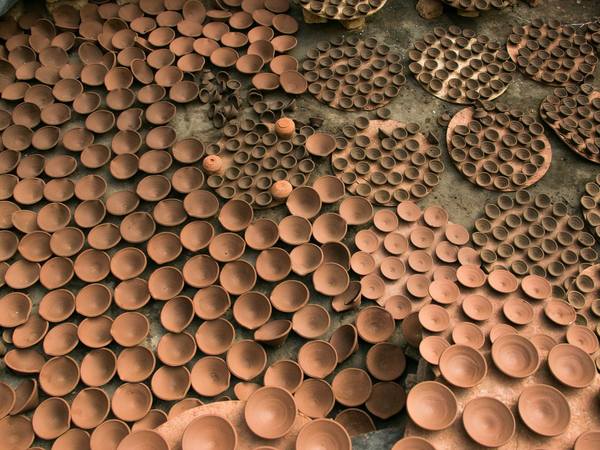Bangalore will be witness to pomp and celebration in the next couple of days on account of Deepavali, the festival of lights. While it is certainly a time to come together with family and friends, it is also important that we give a thought to how we celebrate. If bursting crackers, lighting up your house and exchanging sweets is the norm, then consider making a few changes that could very well make the entire affair more eco-friendly.
Here are a couple of tips to celebrate Deepavali in a safe and eco-friendly manner.
Avoid bursting crackers
Crackers are probably the first thing that comes to mind when one thinks of Deepavali. What we sometimes fail to consider is the aftermath of bursting crackers. While crackers are certainly exciting, remember that the excitement is temporary. Try and recollect the state of the city streets after Deepavali and you should be able to picture silver streaks on the roads and million bits of paper strewn all over. Do give a thought to the air and noise pollution they cause as well.
If you must burst crackers, do buy them from one of the city police approved licensed shops. You could also opt for eco-friendly crackers, these are made from recycled papers and make less noise as compared to the regular ones. While bursting crackers as well, do ensure that you follow safety measures. And don’t forget to clear up the mess the morning after.
Light up without lighting up

Handmade diyas made of clay outside a potter’s house. Pic: Aadi Sesha Iyer
Deepavali translates to a row or series of lights. In the past, this would involve family members lighting rows of earthen lamps and placing them around the house. With advancements in lighting, many folks have resorted to replacing the traditional Deepavali lighting with electric lighting. While fairy lights and string lights certainly look pretty and brighten up the place, there is a certain charm to diyas that cannot be replaced. And they are environment friendly too! And they’re going to ensure that your electricity bill does not shoot up.
Your old clothes could be somebody else’s new clothes
In many houses, cleaning up is the precursor to the festivities. At the time of cleaning itself, make separate piles – one for stuff that can be reused, and the other, of things that can recycled. Items like old clothes, books and stationery can be dropped off at an NGO or handed over to somebody who could reuse it. Here are a couple of places where you can drop off your old clothes. For those things that can be recycled, you could drop them off at a dry waste collection centre.
Buy and use organic
It is inevitable that you buy sweet for your family and friends. What you could do to reduce the stress on landfills is ensure that the packaging that the sweets come in is biodegradable. Avoid boxes that come lined with plastic. On that note, here’s how you can eat healthy this festive season as well.
Opt for organic colours to use in your rangoli. You could turn to your garden for flowers or even the kitchen for spices and rice powder for the rangoli.
You could even wrap the gifts that you are giving in recycled paper or newspaper.
Spare a thought for animals
Animals typically get very stressed with the loud noises and lights caused by crackers. Some pets may even hide under the bed for a good part of the festival. Try calming your pet down. Keep mild sedatives or home remedies handy. You could perhaps avoid doing activities that make loud noises – such as using the pressure cooker or vacuuming your house – to avoid surprising your pet further. If you have a pet that is extremely stressed out, consider heading out of town. You could also explore dropping off your pet off at a boarding that’s away from the city, and therefore the noise. Here’s more on how you can help your pet prepare for Deepavali.
Also look out for strays who might be on the edge. Children in their excitement may burst or throw crackers at them. Do advise them in the hope that they do not repeat it.
From all of us at Citizen Matters, here’s wishing you a Deepavali that is filled with lots of love, light and laughter. We hope these tips help you celebrate the festival of lights in an eco-friendly manner.